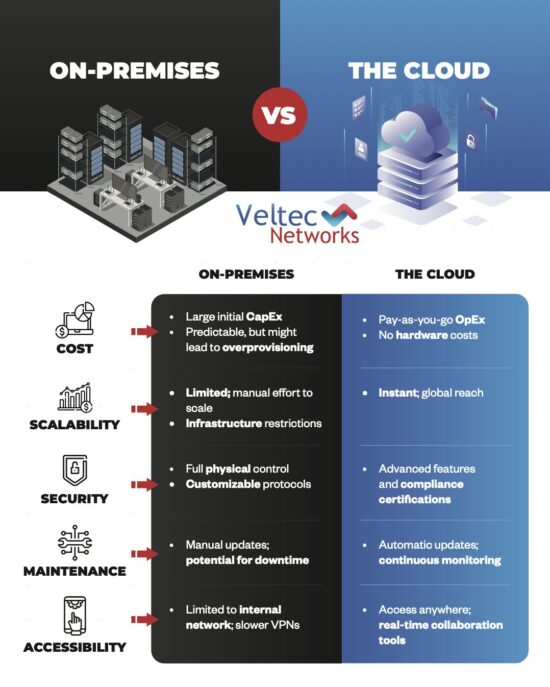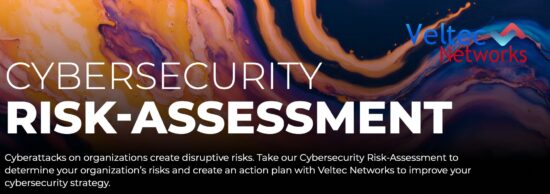Tips to Ensure Business Continuity Before, During, and After a Disaster
A business continuity plan outlines procedures and instructions your organization can follow in the face of a disaster, such as a flood, fire, or cyberattack. You need to create a solid business continuity plan that gives your company the best chance of surviving such unprecedented events. Besides, you’ll rarely get an advance alert that a disaster is about to hit.
A well-thought-through business continuity plan can give your organization the best shot at surviving during a disaster. Lacking a plan in place means your organization will take longer to recover from an event or incident or even go out of business for good.

Types of Disasters
Disasters can be either “foreseeable” or “unforeseeable.” If disasters were inherently and universally foreseeable, business owners would be able to predict them and prevent them from happening. But in reality, even if a disaster seems foreseeable, it doesn’t mean any observer will anticipate it accurately.
Common disasters that a business continuity plan can help you mitigate include:
- Natural disasters – Depending on your physical location, your business could be hit by natural misfortunes such as earthquakes, fires, floods, tornados, or ice storms. These incidents may compromise your business operations and cost you thousands of dollars in recovery costs and lost time.
- Man-made disasters – Common forms of artificial disasters include negligence and deliberate actions by your employees and partners, such as scandals or fraud. External actors such as cybercriminals may also hold your data or systems hostage and demand a ransom, resulting in service disruption and losses.
How Disasters Impact Business
Whether natural or artificial, disasters can significantly impact the economy and businesses in more ways than you could imagine. Regardless of your industry, efficient and reliable supply chains are essential to the success of your company. Unfortunately, disasters can interfere with these supply chains, affecting airports, roads, bridges, and other critical infrastructure.
That means moving goods and services around the affected areas may be impossible. Here are some other ways disasters can impact your business:
- Accessibility Barriers – If your building is flooded or brought down by a raging fire, your employees may not access your workplace to discharge their duties.
- Communication Barriers – Whether it’s panic or loss of communication infrastructure, a disaster can create mass hysteria and hamper communication. The communication problems may persist longer if a disaster damages power stations, optical fiber lines, and cell towers. Communicating with your employees through calls, social media, email, or text messages will become difficult or impossible.
- Loss of Equipment – A disaster can also damage critical equipment such as printers, photocopiers, machinery, company vehicles, etc., which are all critical to business operations.
- Loss of Personnel – Regrettably, you can lose employees during natural disasters. For example, Hurricane Katrina resulted in 1,833 deaths in New Orleans and other areas of the Gulf Coast. Most of these people were employees at different companies across the Louisiana State. Even if no life is lost, your employees may suffer injuries that could keep them away for several weeks or months.
Steps to Maintaining Business Continuity in the Face of a Disaster
To better prepare for a disaster, it’s essential to establish a business continuity plan that accounts for the worst-case scenarios that a natural or man-made disaster can bring. Work with your IT department and vendors to craft a plan that puts safeguards in place for your organization’s information and data. Be sure to include a needs list of any lacking equipment or systems and a timeline for obtaining them.
The plan should also address questions and concerns voiced in your strategy meeting and define communications protocols and chain of command before, during, and after a disaster. Overall, here are some things to begin with after a disaster strikes:
Develop a Communication Plan Beforehand
A solid communications plan consists of policies, procedures, and incident command structures that ensure smooth collaboration before, during, and after a disaster. It’s the primary tool you can rely on to ensure employees follow the laid down protocols during an emergency and stakeholders, emergency teams, the media, and relevant players are updated. To establish a proper communication plan, designate one employee as the first caller and keep contact information for your employees updated.
Keep Customers Informed
Keeping your clients and customers informed about the disaster is critical to your business’s ongoing success and reputation. If you’re going to shut your doors for a certain period to recover from the disaster, it’s prudent to let them know. More importantly, keep updating your clients on the progress of your recovery process and how soon they should expect services to resume back to normal.
Set Up Offsite Hosting and Data Backup
Your businesses should have IT systems set up to minimize downtime and maintain smooth operations during and after a disaster. Typically, setting up these systems can be as quick as two weeks for smaller businesses with simpler needs and as long as one year for larger organizations with more complex needs.
Consider a business continuity program that incorporates offsite hosting services and file backup on the cloud. Fortunately, there are ready-made cloud solutions to back up your data and store it offsite so your company can keep operating smoothly even if a disaster destroys your physical office.
Continue Operating Whenever Possible
Even if your business has been impacted enormously by a disaster, make every effort to continue operating as much as you can. You must empower and liberate employees to embrace and adopt hybrid and multi-cloud technologies to help build secure digital workspaces. As a result, you can improve flexibility and keep your business running.
As you create your business continuity plan, consider bringing on board key personnel from other companies who have gone through a similar disaster successfully. Many people often like to share “war stories” and the critical steps and techniques they employ to save the day. Such insights could prove invaluable in helping you to create a solid plan and recover faster.
Additionally, be sure to put in place the following mitigation measures in your business:
- Reliable power supply
- Alar/intercom systems and notification systems
- Insurance coverage
- Proper employee training or disaster recovery
Test and Retest Your Business Continuity Plan
Testing is the only way to reveal gaps in your business continuity plan and address them proactively. Ensure your team is familiar with everything in the disaster recovery plan and test it over and over. It’s imperative that your employees understand their roles, so you need to run mock disaster scenarios periodically. It allows your employees to practice what to do before, during, and after a real-life disaster.
By periodically testing the plan, you can also identify gaps, make necessary adjustments, and refine the plan to match your business needs. For example, you could secure any additional systems or equipment required and share the updated plan with your staff.
Get Expert Help Crafting a Business Continuity Plan
Ultimately, your business continuity plan can only be successful if it’s supported from the top down. Your senior management must be fully represented when creating and updating the plan to ensure it remains fresh and viable. More importantly, you should work with a professional IT service provider to ensure the plan incorporates reliable data security and backup solutions.
Veltec Networks offers cybersecurity and IT managed services to organizations throughout the San Francisco Bay Area. We can show your business how to manage the risk of a cybersecurity breach amidst a disaster. When you hire Veltec Networks as your cybersecurity team, you’ll immediately get a team of IT security experts who will ensure your customer records, computer network, accounting data, and email are secure at all times from hackers, ransomware, and other threats. Contact us today to schedule a free initial consultation!






